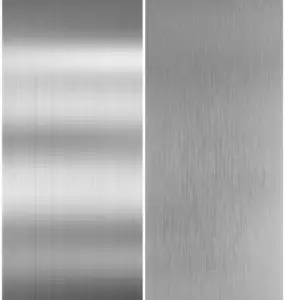 Metal is a material (usually solid) comprising one or more metallic elements (e.g., iron, aluminium, copper, chromium, titanium, gold, nickel), and often also nonmetallic elements (e.g., carbon, nitrogen, oxygen) in relatively small amounts. The unique feature of metals, as far as their structure is concerned, is the presence of charge carriers, specifically electrons. This feature is given by the nature of the metallic bond. The electrical and thermal conductivities of metals originate from their outer electrons being delocalized.
Metal is a material (usually solid) comprising one or more metallic elements (e.g., iron, aluminium, copper, chromium, titanium, gold, nickel), and often also nonmetallic elements (e.g., carbon, nitrogen, oxygen) in relatively small amounts. The unique feature of metals, as far as their structure is concerned, is the presence of charge carriers, specifically electrons. This feature is given by the nature of the metallic bond. The electrical and thermal conductivities of metals originate from their outer electrons being delocalized.
Joining Processes
Metal joining is a controlled process used to fuse metals. There are several techniques of metal joining, of which welding is one of the more basic forms.
- Welding. In welding, one of the most common joining processes, two or more metal parts are joined to form a single piece by using high heat to melt the parts together and allow them to cool, causing fusion.
- Brazing. Brazing is a metal-joining process in which a filler metal is melted and drawn into a capillary formed by assembling two or more work pieces. The filler metal has a lower melting point than the adjoining metal. Brazing differs from welding in that it does not involve melting the work pieces and soldering in higher temperatures for a similar process while also requiring much more closely fitted parts than when soldering.
- Soldering. A technique for joining metals using a filler metal alloy with a melting temperature of less than 425°C (800°F). Because of this lower temperature and different alloys used as fillers, the metallurgical reaction between filler and workpiece is minimal, resulting in a weaker joint. In electronics assembly, the eutectic alloy with 63% tin and 37% lead (or 60/40, which is almost identical in melting point) has been the alloy of choice.
- Riveting. Riveting is one of the most ancient metalwork joining processes. A rivet is essentially a two-headed and unthreaded bolt that holds two other pieces of metal together. Currently, riveting still retains important uses in industry and construction. Solid rivets are used in applications where reliability and safety count. A typical application for solid rivets can be found within the structural parts of aircraft. Hundreds of thousands of solid rivets are used to assemble the frame of a modern aircraft.